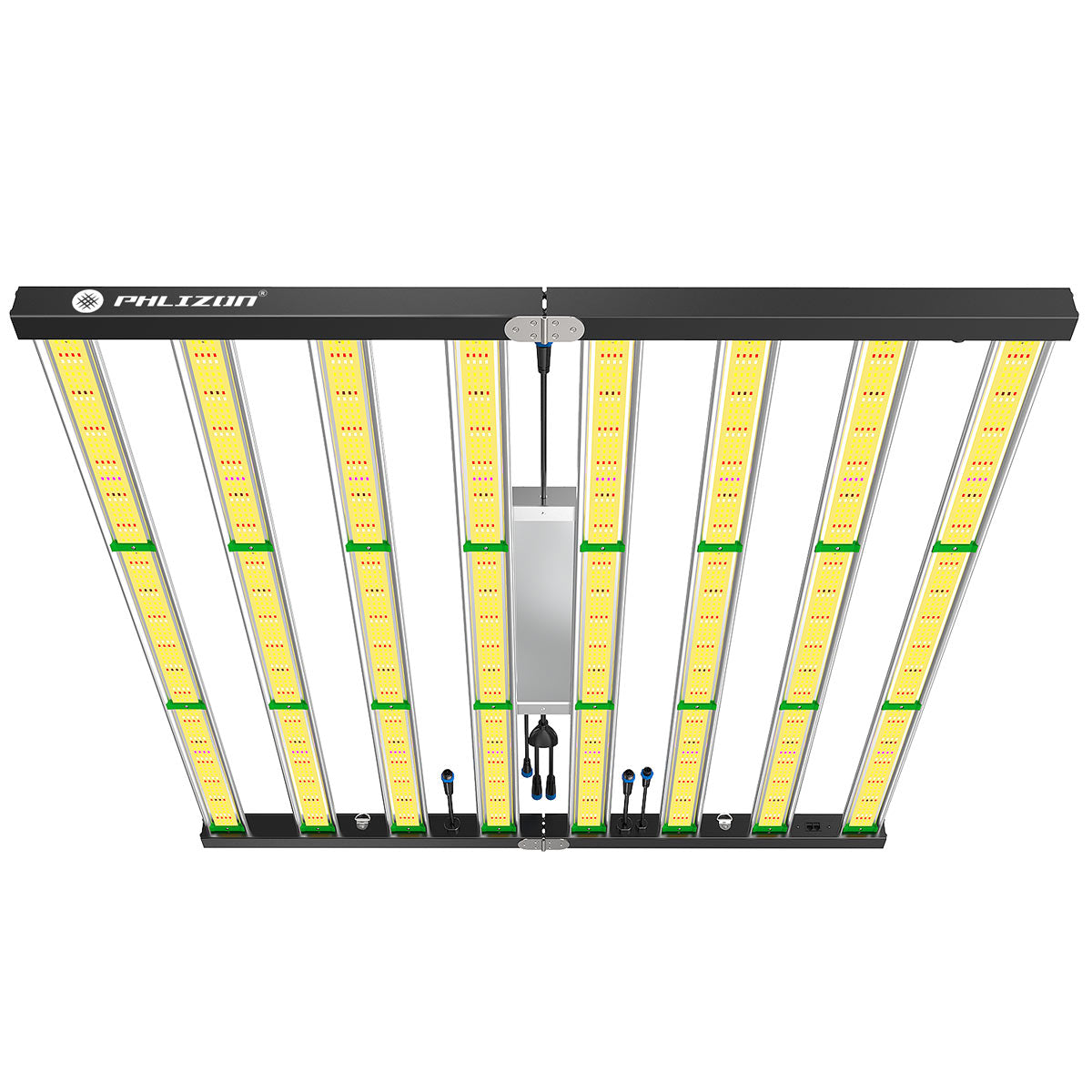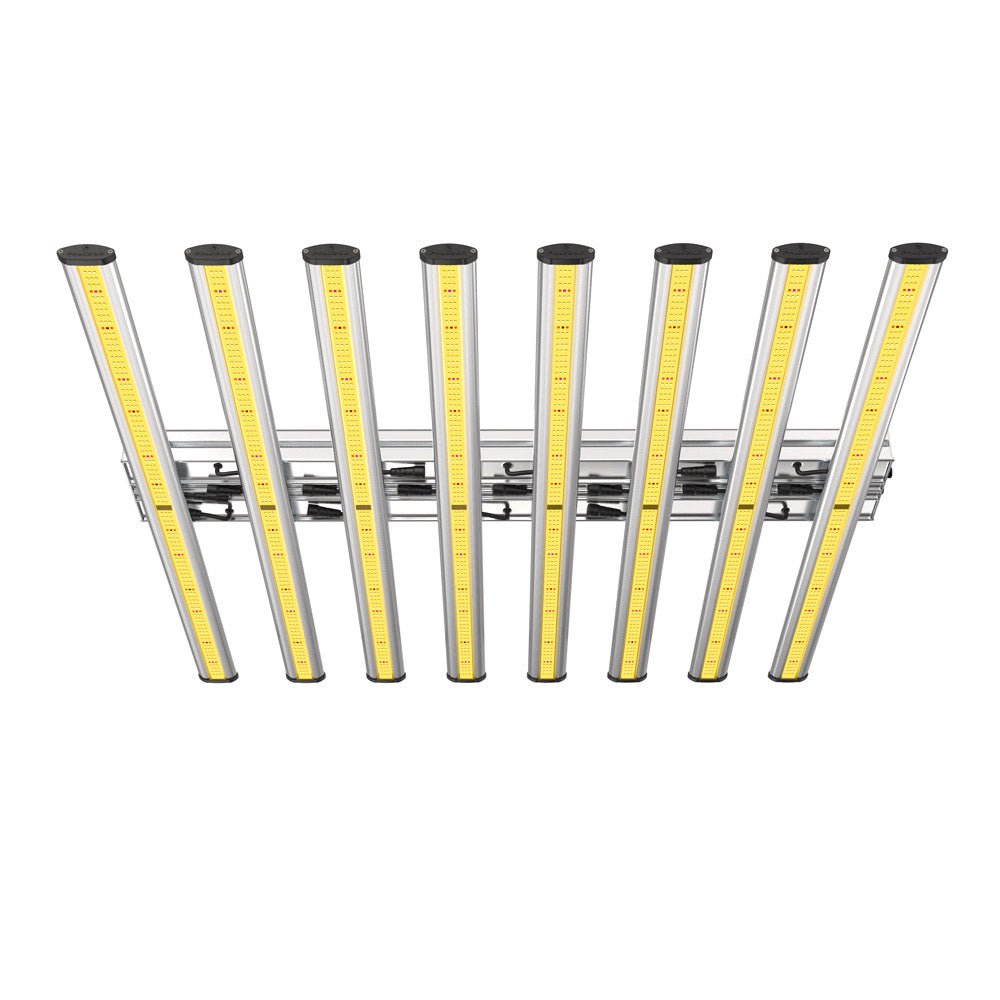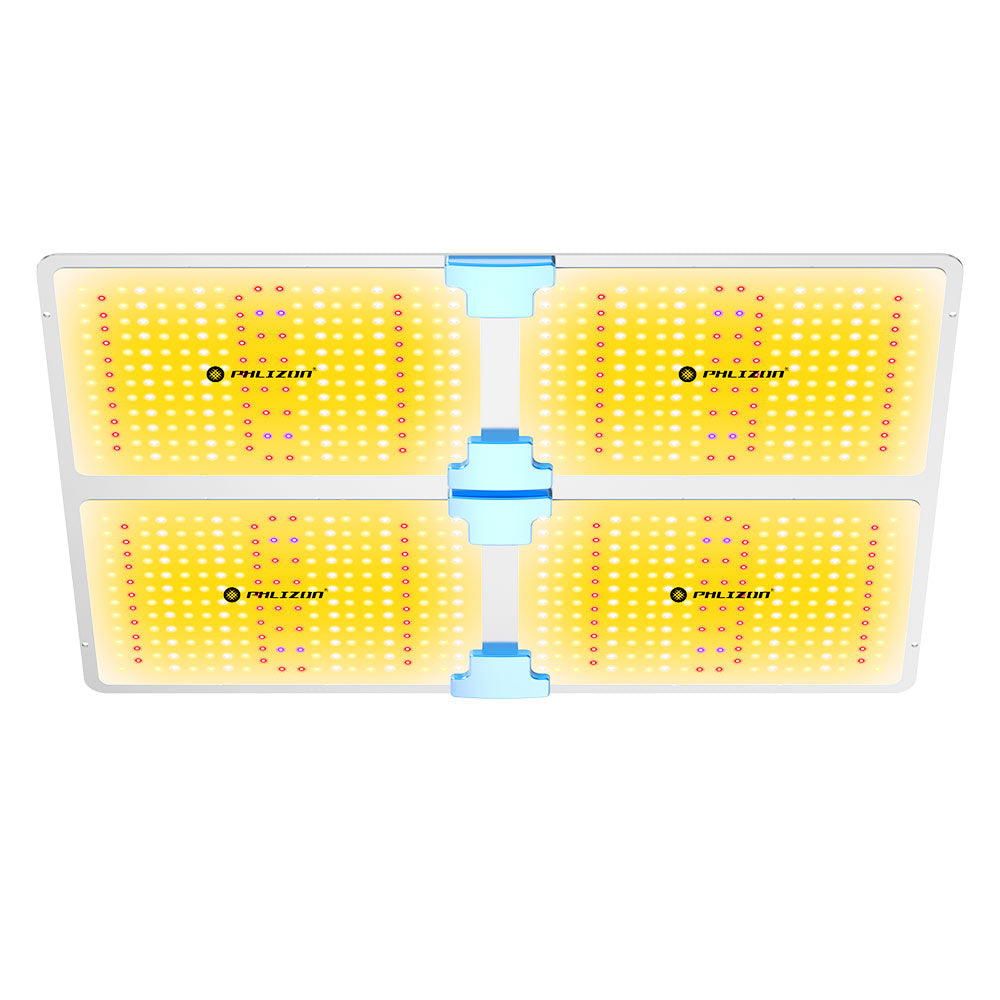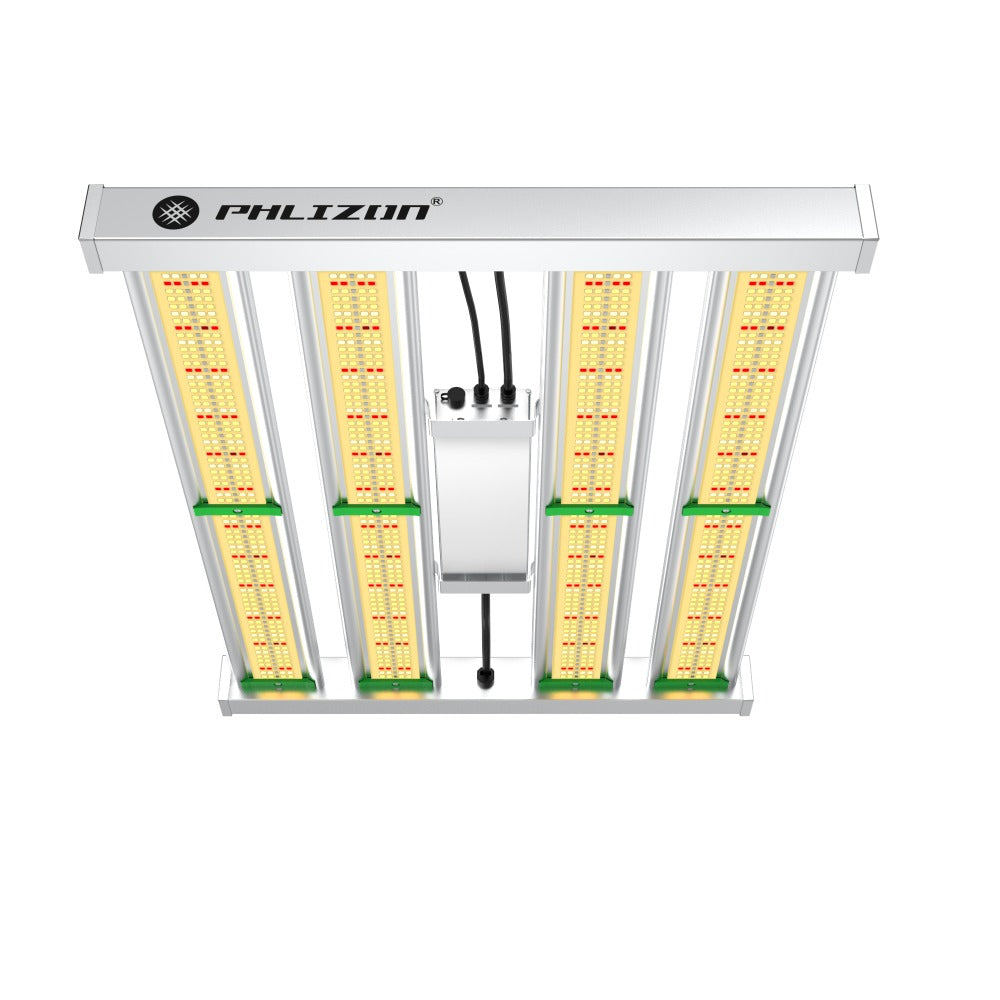Menu
How Far Should LED Grow Lights Be from Plants?
LED grow lights are a game-changer for indoor gardening, but figuring out how far they should be from your plants can be tricky. The right distance depends on the plant type, growth stage, and light intensity. Here’s a deep dive into what you need to know, pulled straight from reliable corners of the web.
The Basics of LED Grow Light Placement
When it comes to growing plants indoors, LED grow lights play a crucial role in providing the light plants need to thrive. The height at which LED grow lights should be placed above plants is just as important as the light itself. Here are some factors to consider when determining the height of LED grow lights above plants:
- Type of LED light: Different LED grow lights have different intensities, so the height at which they should be placed will vary. Check the recommended hanging distance of the grow light for reference.
- Growth stage of the plant: The height at which LED grow lights should be placed will also depend on the stage of growth the plant is in.
- Intensity of the light: High-intensity LED lights will need to be kept further away from plants than low-intensity lights to avoid leaf burn or stunted growth.
While LED grow lights are essential for indoor plant growth, it is possible to have too much of a good thing. Too much light can be damaging to plants, leading to leaf burn or stunted growth. Leaf burn occurs when LED grow lights are placed too close to plants, causing the leaves to become white or yellow and crisp, eventually dying off. Stunted growth means the plants will not grow as tall or as wide as they should, leading to poor yields.
Distance by Growth Stage
The optimal LED grow light distance from the plant largely depends on the growth stage of the plant. Grow light distance seedlings require the farthest to prevent light burn and support early development. During the vegetative stage lights should be positioned 18-24 inches away to provide sufficient light for vigorous growth. In the flowering stage plants need more intense light so lights should be closer around 12-18 inches. Some plants are more sensitive to LED grow light distance and may need greater distance to prevent damage while others thrive under more intense light and can handle closer proximity.
For seedlings LED grow lights can be placed about 6-12 inches above the plants. If your grow light has an adjustable intensity you may need to dim the light down (usually to around 30% intensity). If the light is too intense or can’t be dimmed it’s ideal to place the fixture higher and lower it as the seedlings get used to the intensity and spectrum. As plants grow into the vegetative stage the lights can be raised to about 18-24 inches above the plants. The intensity may be increased since larger plants can absorb more light—generally you’re running your fixture at about 50% power at this point. During the flowering stage LED grow lights should be placed about 18-30 inches above the plants depending on the light output of the fixture.
Wattage and Intensity Matter
Wattage is considered a significant factor in determining how close grow lights should be to plants. High-wattage lights (300W and above) emit more intense light and heat, necessitating a distance of 18-24 inches (45-60 cm) to avoid light burn and manage heat. For example a 1000 watt LED grow light is recommended to be placed 36 inches away from the plants during the seedling stage. The lights can be lowered to 24 inches during the vegetative stage and to 18 inches during blooming or flowering.
The closer your grow light is to your plant, the higher the light intensity (PPFD). The farther away your grow light, the lower the light intensity. An easy analogy for PPFD is to think of your grow light as a sprinkler head. Just as sprinklers distribute water in multiple directions, grow lights do the same with light. If you stand right next to a sprinkler you’ll get drenched quickly with more drops of water (light photons in our analogy). But if you’re farther away you might only feel a subtle spray with fewer drops. Sun-loving plants like tomatoes perform better closer to the grow light receiving a more intense “spray” whereas shade-tolerant plants like ferns might suffer at the same distance.
How to Get It Right
Here’s a quick way to check your light distance without breaking out the calculator: simply place your hand a few inches above the top of your canopy while your lights are on. If you can hold your hand there without it getting too hot it’s at a good distance from your plants. Your hand should feel warm but not uncomfortably hot.
Monitor for signs of stress or damage: regularly observe the plants for any signs of stress or damage from the LED lights such as leaf burn bleaching or stunted growth. If you notice any negative effects it may indicate that the lights are too close and the distance should be increased. On the other hand if the plants are stretching towards the lights or showing signs of insufficient light it may indicate that the lights are too far away and the distance should be decreased.
LED grow lights produce heat which can affect the temperature of the plants. If the light is too close it can cause overheating; if it’s too far it may not provide enough warmth. Use a thermometer to keep the temperature in check.
Why It’s a Big Deal
Proper LED grow light distance from the plant supports healthy photosynthesis and growth prevents light burn and heat stress and allows for better airflow and cooling. Adjusting the distance according to the plants’ growth stages—seedling vegetative and flowering—ensures they receive the appropriate light intensity needed for each phase. Correct grow light distance also maximizes energy efficiency reduces power consumption and influences plant morphology leading to better quality flowers and overall yield.
If your lights are too far away plants will appear lanky and feeble which can cause color loss and eventual death. This process called etiolation is often mistaken for accelerated growth since plants lacking light will stretch upward quickly—but it’s not a good sign. Conversely if lights are too close you risk stunted or irregular growth (curly drooping leaves) bleaching (yellow or white spots on upper leaves) or burning (brown edges on leaves nearest the light).
Specific Scenarios
LED grow lights should be hung at 12" or 30cm over the plant canopy for maximum efficiency. Increase to 18" or 45cm to achieve a more even spread across the plant canopy. If the distance from the LED grow light to the plants is relatively low at 30cm or 12" more light will reach the canopy but the spread will be less uniform—plants in the center will receive much higher intensity than those at the edges. Increasing the hanging height to 45cm or 18" boosts intensity at the edges and improves uniformity though the total amount of light reaching the canopy decreases slightly.
For cannabis during the vegetative stage when the plant is growing leaves and stems it needs less light than during the flowering stage when it’s producing buds. Keep the LED grow light 18-24 inches away during vegetative growth and closer around 12-18 inches during flowering. Watch for signs of stress: if plants stretch toward the light or leaves turn brown move the light closer; if leaves curl or yellow move it farther away.
For succulents a general rule is to keep the light 6" above the soil when germinating seeds then 8-12" when plants are growing. Provide plenty of air circulation especially in a tent. If you experience leaf curl or burning the light is too close; if plants become leggy and floppy (reaching for light) it’s too far. For seedlings of vegetables or herbs LED bars should be 8-10 inches apart and about 24-36 inches above the plants initially lowering to 18-24 inches as they mature.
Frequently Asked Questions (FAQs)
Q: Does every plant need the same distance?
No, it varies. Seedlings might need 24-36 inches, while flowering plants like cannabis can handle 12-18 inches. Check what your specific plant likes.
Q: How can I tell if the light’s too close?
If leaves turn yellow, white, or crispy, especially at the top, the light’s too close. Raise it a few inches and watch for improvement.
Q: What if my plants are reaching up?
They’re not getting enough light. Lower the lights a bit or turn up the intensity if you can, then see how they do.
Q: Does wattage decide everything?
Not quite. A 1000W light might need 36 inches, but a 300W with a strong beam could too. It’s more about the light’s power and your plant’s needs.
Q: Do I need to move the lights every day?
No, just check weekly or when plants grow a lot. Adjust to keep the right distance for their stage.
Q: Can I test it without tools?
Yeah, put your hand above the plants under the light. If it’s too hot to hold there, raise the light. Warm is fine, burning isn’t.
Wrapping Up
How far LED grow lights should be from plants isn’t a single answer—it’s about your setup, your plants, and their stage. Start with seedlings at 24-36 inches, vegetative at 18-24 inches, flowering at 12-18 inches, and tweak from there. Watch for burns or stretching, use your hand to test, and adjust as needed. Get it right, and your plants will thank you with solid growth and good yields. Happy gardening!
Featured blog
- Choosing a selection results in a full page refresh.


















